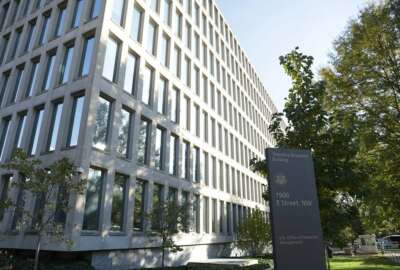Insight by SAP
Workplace Reimagined 2024: SAP’s Mike Hofer on digitization, workforce opportunities
Modernizing human resources systems will help agencies prepare for workforce challenges, technology opportunities, the SAP SuccessFactors HR advisor says.
Steven Hunt describes in his book, “Talent Tectonics,” how technology paired with current and impending workforce shortages create a unique opportunity for organizations.
Hunt suggests that organizations need to improve employee experience in the office and combine that with emerging technologies to “unleash people’s innate ability to learn and support their fundamental desire to live a meaningful and fulfilling life.”
Relatively speaking, there are few places compared to the federal government where the impact of changing demographics and the influence of technology is causing a tectonic shift like Hunt describes in his book.
“Digitization is the rapid pace of innovation and the adoption of it. In the cyber world, for example, we’re seeing a lot of the innovation that’s coming very quickly, and we’re having to adjust to it. Another example is we worked with the Defense Department a couple years ago on autonomous vehicles. And now artificial intelligence is front and center, and it wasn’t there three years ago. So we’re moving at a very fast pace,” said Mike Hofer, executive human resources value advisor for regulated industries at SAP SuccessFactors on Federal News Network’s Workplace Reimagined Exchange 2024. “Then you look at demographics, and people are living longer. In addition to that, 30% of the workforce is over 55, and so you can imagine the retirement cliff that’s coming.”
In many ways, agencies already are trying to close workforce gaps with technology. Through the use of robotic process automation (RPA) and similar tools, agencies are trying to push their employees to high-value and complex work.
Broadening the federal recruitment pool
Hofer said agencies also have the opportunity to expand the pool of candidates for certain jobs.
For instance, neurodiverse people are underutilized across all sectors, he said.
“When we look at the statistics, one in four people have some form of neurodiversity, and 85% of those with good college educations who have neurodiversity are unemployed. That means that you have millions upon millions of candidates who are untouched and accessible for the federal government,” he said.
“As an example on the civilian side, SAP has done a good job — and actually was the pioneer — in creating workforce augmentation to employ these people because of the great opportunity that they have, the skill sets that they have. Not only did we create a hiring program for the autistic community, but also for our managers and our employees beyond that to continue the learning and development for them as well. If the government was to lean in on that, I believe there’s huge opportunity.”
Another path to addressing the demographic challenge is through the Office of Personnel Management expansion of Reserve Officer Training Corps (ROTC) programs.
Hofer said potential employees who are in or have gone through ROTC programs bring a level of skills and learning development that could help agencies.
AI can provide new, better HR insights
On the technology side, Hofer said agencies have struggled to improve their human resources systems for years. But with the emergence of cloud and now AI, he said the opportunity to centralize systems and data and then provide managers with insights is available today.
That’s the chief emphasis of SAP SuccessFactors HCM, a cloud-based and FedRAMP-certified suite of HR solutions, Hofer said.
For agencies seeking to centralize human capital services, a major focus should be in the core HR area, he said. “This is where everything belongs, all the employee content and all the information,” Hofer said. “What’s interesting about that is the impact that AI is going to have. How do you prepare your core systems to use AI? Because if you don’t have a good, clean system, AI will do nothing for you. So it’s going to be important that, over the next several years, we focus on centralizing those HR systems, providing those deep and rich insights, and tying that to our workforce planning.”
At the same time, he said agencies can’t overlook the need to upskill and reskill current employees too, especially in the cybersecurity area.
“Even before they start recruiting, they need to take the people that have the experience, provide them with continuous development and learning throughout their career to enable them to transfer over into cyber-type careers,” he advised.
Hofer summarized his top takeaways:
- Take advantage of the moment to lean into digitization and new tools that can let your agency address workforce gaps while expanding your current employees’ ability to take on unique mission-driven tasks.
- Long term, centralize HR data and leverage cloud services to more easily gain insights about your agency’s human capital management needs and to support employees better.
- Short term, cull and prepare your HR and HCM data to ensure your agency can implement AI and other emerging tools effectively and be ready to innovate and adapt going forward.
Discover more articles and videos now on Federal News Network’s Workplace Reimagined Exchange 2024 event page.
Copyright © 2025 Federal News Network. All rights reserved. This website is not intended for users located within the European Economic Area.
Jason Miller is executive editor of Federal News Network and directs news coverage on the people, policy and programs of the federal government.
Follow @jmillerWFED






